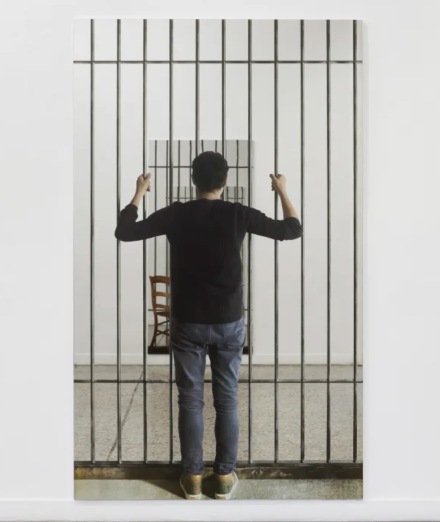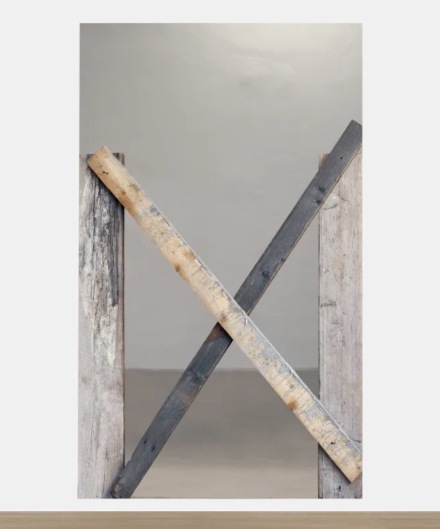
Michelangelo Pistoletto, Uomo che guarda attraverso la gabbia (2018), via Simon Lee
Marking a newe perspective on the storied output of artist Michelangelo Pistoletto, Simon Lee Gallery has opened a show of recent works by the Italian artist. For his fifth exhibition at the gallery, the artist presents a series of mirror paintings that reflect on themes of captivity, isolation and restriction at a fractured moment in contemporary history.

Michelangelo Pistoletto (Installation View), via Simon Lee
Pistoletto is widely recognized as one of the most influential contemporary artists of his generation and a central figure within the Arte Povera movement. From early in his five-decade career the mirrored surface has been an instrumental element of his practice. The artist gained prominence in Italy during the 1960s and 70s against a turbulent socio-political background characterized by unstable leadership, economic downturn and social upheaval. Amidst this tense political atmosphere, he used his art to reflect on the radical ideologies gaining currency amongst a younger generation struggling to find their place in a broken society, exploring subjects from student insurrection and incarceration to anti-government feeling and political demonstration. His mirrored surface offered the perfect vehicle to implicate agency on the behalf of the viewer, whose fleeting presence in the work vacillates between active participant and passive spectator. This critical attitude is by no means isolated in Pistoletto’s practice, which has continued to function as a zealous site for political interrogation to the present day.

Michelangelo Pistoletto, Passaggio sbarrato (2020), via Simon Lee
Initiated in 1962, Pistoletto’s signature mirror paintings use the reflective picture plane to draw both viewer and environment into the work, thereby establishing an active relationship between artwork and spectator, while simultaneously creating a virtual space in which art and life can seamlessly interact. Depicting barred gates and brick walls, these recent mirror paintings evoke threats to freedom of movement and communication. The iconography of the cage is a recurring theme in Pistoletto’s work, first appearing in the early 1960s and reaching its apex in 1974 with Gabbia, or ‘Cage’, a series of 29 silk-screened panels of identical sections of iron bars that explored themes of detention and persecution. Just as the figures that occupy these works, the viewer is trapped or restricted, although whether they represent prisoner or guard is ambiguous. What is not up for debate regardless of political standpoint is the incrimination of the spectator in society’s struggles. For Pistoletto, art is political and as large-scale warfare returns to Europe for the first time in nearly 80 years amidst an atmosphere of disinformation and propaganda, these works take on a new and disquieting significance.

Michelangelo Pistoletto (Installation View), via Simon Lee
In the modern context, this is a powerful notion, and Pistoletto wastes little energy in attempting to convert the viewer. The image itself is a powerful stand-in for all of the problems Pistoletto sees and poses here. It closes July 16th.
– C. Rhinehart
Read more:
Simon Lee [Exhibition Site]



